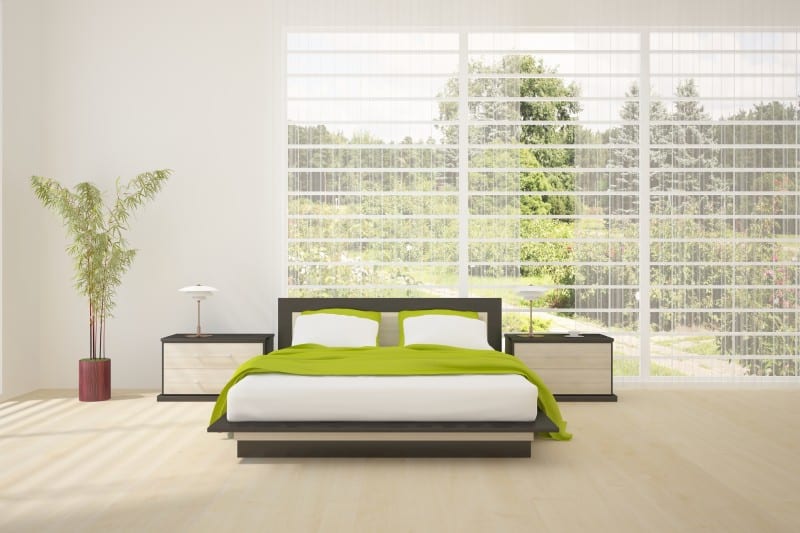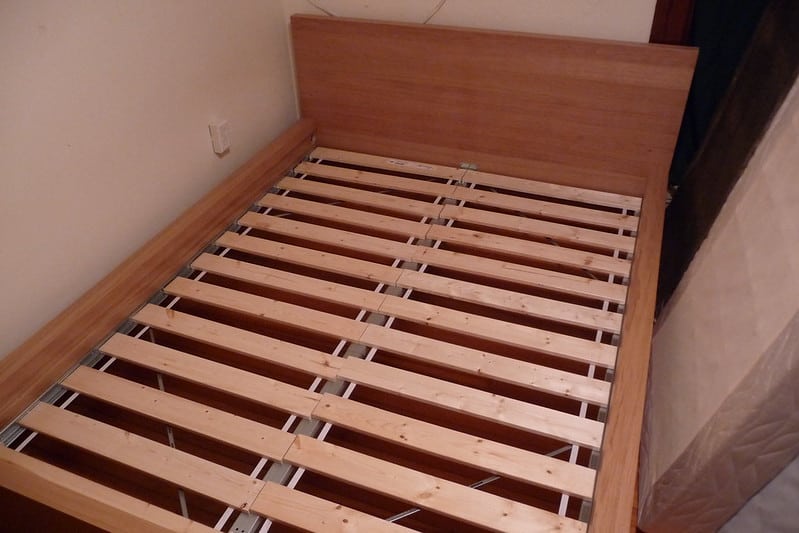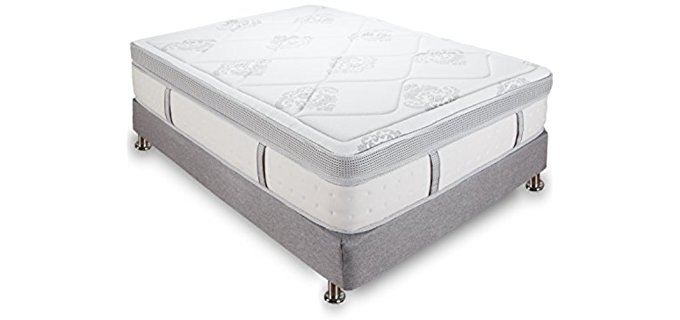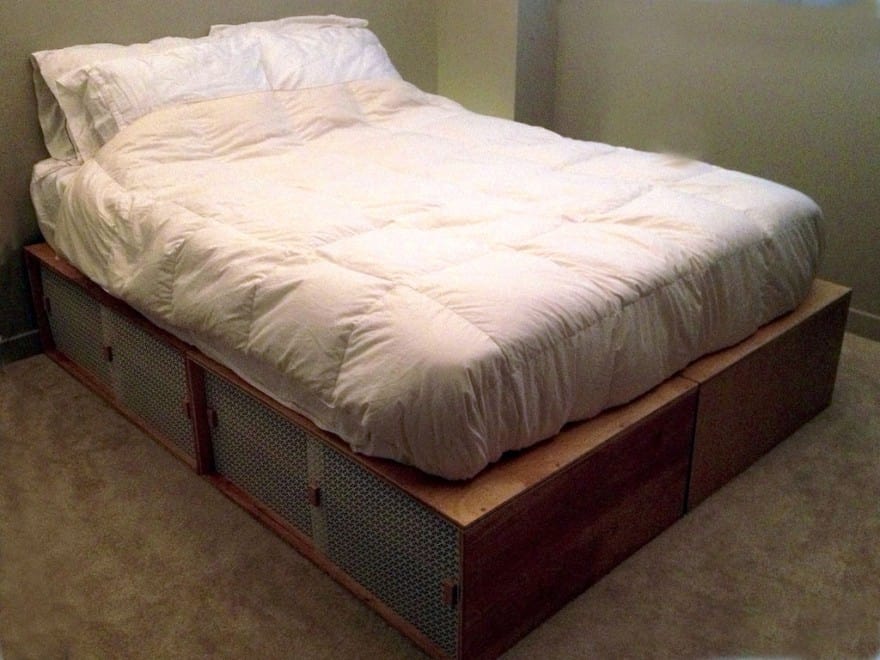The box spring bed foundation seems to have been around forever, but it has never been used in some countries. In fact, many countries around the world have alternatives that serve them more than enough.

What Is a Box Spring?
You sleep on a mattress most of the time, but your mattress needs to rest on something. It should ideally have a foundation.
The box spring is essentially a box that sits underneath a mattress for it to rest on. This box is filled with tough springs.
These springs form a firm foundation for the mattress, supporting it very well, but they also act like shock absorbers.
When you lie down on your mattress, the springs underneath take the weight and provide a firm but flexible structure.
If you’ve ever laid down on a hard surface, you’ll understand that having any kind of flexibility to cushion the weight of your body is going to make for a more comfortable night of sleep.
Alternatives to Box Springs
Though the box spring has been in vogue for a long time, there are plenty of other bed foundation alternatives that work perfectly well.
In fact, some of them are far less expensive than investing in a box spring. Here are 10 of them:
1) Platform Bed

If you want a tall bed but you don’t want a box spring, the platform bed is an ideal alternative. The platform bed is composed of a frame, often made of wood but can also be made of metal, and sits up high. Many of them have a headboard and footboard already attached as part of the frame.
Pros:
- Great support for any mattress without the need to invest in a box spring
- Many platforms have a nice contemporary look and there are even platforms that seem to float above the floor
- Many platform frames have space for additional storage, such as drawers in the sides
- The design often provides great airflow around the mattress
- The steel frame platform designs are very durable
Cons:
- They are often expensive, especially if they have a headboard, footboard, and extra storage
- They are often bulky and heavy and require significant time to take apart and put back together
- Though they do sit quite tall, they are often still too low for elderly people
- If the platform is wooden, it won’t be able to resist too much weight over time
2) Memory Foam Mattress

Memory foam is used in shoes because it molds to the shape of the foot and provides extra comfort. The memory foam mattress does the same thing and actually molds to the shape of your body, thus providing extra comfort and support.
Pros:
- Very comfortable and great support for those with back pain, injuries, and other chronic pain
- Due to the nature of the memory foam, no box spring is needed for extra support, but wooden slats can provide a good base and airflow
- Memory foam mattresses are hypoallergenic and will resist allergens
Cons:
- Memory foam mattresses can be expensive to invest in
- Some people tend to find that they get hot when sleeping on a memory foam mattress because it molds so closely to their body shape
3) Wood Platform with Slats

You can find wooden slat foundations in many children’s beds. These are a platform of wooden slats that are spaced closely together. Some of them are more rigid and firm, while others are attached to springs and are more flexible.
Pros:
- Wooden slats tend to be less expensive than box springs and also provide excellent airflow around the mattress
- They are also often less expensive to buy and strike a good balance between support, functionality, and price
- Wooden slats are also generally lighter than box spring foundations, making it a great choice if you rent and you move house often
Cons:
- One of the key issues with wooden slats is that they are not as resistant to heavy weight as box springs, so if you or someone else jumps on the bed, or even stands on it to change a light bulb, any of the slats can splinter or break under the weight.
- Lots of people get a box spring because they add more height to a bed, but wooden slats are flat and don’t add extra height, making it something of an issue for people who might struggle to get in and out of bed due to being infirm.
4) Innerspring Mattress
If you have a mattress that doesn’t have springs in it already, you need a bed foundation. If your mattress has coil springs inside, you have what is called an innerspring mattress.
It’s like a mini box spring, except you don’t need to invest in a separate box spring bed foundation.
Pros:
- Since you already have the coil springs included inside the mattress, you don’t need a box spring
- Good quality innerspring mattresses are very comfortable and durable
Cons:
- If you get an inexpensive innerspring mattress, it won’t be quite so durable, and the coils inside it can start to poke through and you may even feel them underneath.
- The coils do transfer movement and vibration, and some people find this disturbs them during sleep.
5) No Base (mattress on floor)
Sometimes, we get so used to doing things in a certain way that we have trouble looking at the alternatives.
If you have a good quality mattress already, you may not even need a bed foundation for it at all. In fact, you could even place your mattress directly on the floor!
Look to the Japanese for inspiration in this instance. The fact is that they have been sleeping on a simple mattress and a Tatami mat for centuries without any problems whatsoever.
The Futon has steadily been gaining ground in Western nations, but it has yet to reach the popularity of regular bed foundations. That said, if you have a good mattress already, you actually don’t need a bed foundation for it.
Pros:
- By just using your mattress, you save money because you don’t need to invest in a bed foundation for it.
- Though the Japanese have been doing it this way for centuries, it provides a fresh and modern look for many bedrooms in the West.
- It’s simple and unfussy.
Cons:
- You really do need a good solid mattress to do it this way otherwise you’ll not be comfortable.
- Those who are infirm, injured, or elderly will likely have trouble getting in and out of bed.
6) Hybrid Mattress

If you’re looking for a combination of a memory foam mattress and an innerspring mattress, the hybrid mattress is for you.
The bottom section incorporates pocket coils, as in an innerspring mattress, and the top layer is composed of memory foam. This layered mattress provides the comfort and support that many people find appealing.
Pros:
- The combination of memory foam and coil springs provides the best of both worlds
- The springs mean that you don’t need to invest in a box spring bed foundation
- Many people find the hybrid mattress very comfortable and supportive
Cons:
- Hybrid mattresses are generally quite expensive due to the fact that they incorporate multiple layers and two types of technology
- As with other memory foam mattresses, some people find the top layer retains too much body heat, making it uncomfortable
- Hybrid mattresses are also heavy and difficult to move around, making them better for people settled in a single home rather than those who rent or move around a lot
7) Adjustable Bed
The adjustable bed is motorized and can be adjusted to suit your needs. These types of beds are used in hospitals and other healthcare organizations because they provide optimal comfort for patients who are in recovery and those who are in pain.
Pros:
- Adjustable beds are the ideal type of bed for elderly people and those who need assistance getting in and out of bed because they can be adjusted
- If you like reading in bed, being able to adjust your bed so that you are sitting up is great
- If you need to elevate your head or feet for any reasons, such as suffering from back pain or having sleep apnea, nothing beats an adjustable bed
Cons:
- As you’d expect, adjustable beds are also one of the most expensive types of beds on the market
- Being motorized means that things can go wrong and this is when repair or replacement will be needed
8) DIY Bed Frame
Have you ever wanted to make your own bed frame? If you’re handy, making your own might just be the way to go. Having full control over what it looks like and what it’s made from is appealing to lots of people and really suits the DIY aesthetic.

Pros:
- If you make it yourself, you can save a huge amount of money just by using reclaimed wood.
- You have total control over the look and the aesthetic, meaning that you can make it fit in with other décor.
- There are few things more satisfying than making something yourself.
- Even if you don’t quite have the know-how, there are plenty of online tutorials to follow.
Cons:
- If you’re not into DIY, then this is not going to be the project for you.
- It can take some time to get things right, so if you’re in a hurry you might be better buying a bed frame from the store instead.
9) Foldable Metal Platform Bed Frame
The foldable metal bed frame is convenient because it’s lightweight and can be folded for easy storage. In fact, many people use these metal frames for spare bedrooms.
Consisting of a solid metal frame and sturdy wire supports, the metal bed frame also has extra space underneath for storage.
Pros:
- The price is inexpensive in most cases
- Lightweight and foldable design makes it a great option for those who need a spare bed occasionally, or those who move house often
- Very easy to fold up and put into storage.
- Extra storage space underneath makes it a good option for kid’s bedrooms.
Cons:
- There are noiseless varieties, but bear in mind that an inexpensive metal frame can make noise as you toss and turn in bed.
- Not as durable as other options.
- The metal frame won’t offer the same level of support and comfort as a box spring, especially if you are using a thin mattress.
10) Bunkie Board
If you want an alternative to the traditional box spring, the Bunkie board might just be your answer. The Bunkie board is a thin wooden platform that normally has a layer of fabric.
Some people put them on the wooden slats of a bed foundation to provide extra support, but there is no reason why they can’t simply be used as a foundation for your mattress right on the floor, as long as you have a good quality mattress.
Pros:
- Light in weight and not bulky, making it easy to move around when you need to.
- Sturdy enough to provide a solid foundation for most mattresses without the need to invest in a box spring.
- Can make other bed foundations more effective, such as wooden slats.
- Strong and durable.
- Saves plenty of space in the bedroom and can make for a more modern look.
- It’s possible to make a Bunkie board yourself with the right materials and instructions
Cons:
- They don’t provide the same cushioning as a box spring, so it’s necessary to have a good quality mattress, such as an innerspring or a hybrid
- Some people find that the Bunkie board moves around too much and needs adjusting each day
Conclusion
Though box springs are the traditional bed foundation, their use goes right back to the 1800s when beds needed to be raised high up off the ground to put some space between people and rodents and bugs.
We don’t really have that kind of problem anymore! These days, they are really not necessary, and there are plenty of good alternatives that provide some excellent advantages.
Related Posts
- Comparison of Duvet vs Quilt vs Blanket: Cozy Bedding Explained
- Pros and Cons of Electric Blankets and Safety Guide
- Comparison of Murphy Bed vs Sleeper Sofa For Your Home
- Different Types of Doors for Closets – Design Ideas with Pictures
- Two Color Combination for Bedroom Walls – Design Ideas
- White and Gold Bedroom Design Ideas With Unique Photos
Leave a Reply